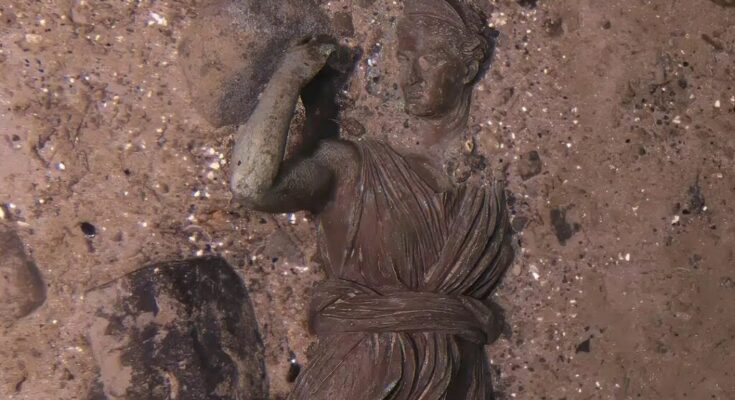
A stunning statue of the Greek goddess Artemis (Diana in ancient Rome) was discovered near the wreck of the Titanic, which sank in April 1912 after striking an iceberg, claiming the lives of 1,500 people.
Originally photographed in 1986 by Robert Ballard, the Diana of Versailles bronze statue’s precise location remained elusive for decades.
Measuring roughly two feet in height, the statue was a centerpiece in the opulent first-class lounge, a room renowned for its intricate design and elegance.
Measuring roughly two feet in height, the statue was a centerpiece in the opulent first-class lounge, a room renowned for its intricate design and elegance.

When the Titanic split in two, the statue was torn from its mantle and lost in the debris field only to resurface now after years of searching.
Who was Artemis whose statue sank with the Titanic?
In Greek mythology, Artemis is one of the twelve Olympians, the most important deities in the ancient Greek pantheon. She is the daughter of Zeus, king of the gods, and Leto, a lesser-known Greek goddess. Her brother was Apollo, god of the Sun and light.
On the contrary, Artemis is related to the moon and she is heavily identified with other lunar deities such as Selene and Hecate. She is also the goddess of the hunt, nature, the wilderness and wild animals. She carries a silver bow and quiver full of arrows made by the Cyclopes on the island of Lipari. She is also the protector of young children and a goddess of chastity and childbirth.
According to BBC, James Penca, a Titanic researcher and host of the Witness Titanic podcast, described the find as akin to locating “a needle in a haystack,” underscoring the significance of this rediscovery.
RMS Titanic Inc., the sole company authorized to recover items from the wreck, now holds the rights to the statue, which once graced the luxury liner’s most exquisite room.
New photos from a recent mission using underwater robots reveal that the legendary Titanic is slowly decaying at the bottom of the North Atlantic 400 miles from Newfoundland, Canada.
According to the company, many art objects, sculptures, and statues that were in the halls and rooms throughout the ship are now decomposing on the sandy seabed, submerged in the North Atlantic.
Since the discovery of the wreck in 1985, thousands of objects from the Titanic have been recovered and are on display in museums around the world.



